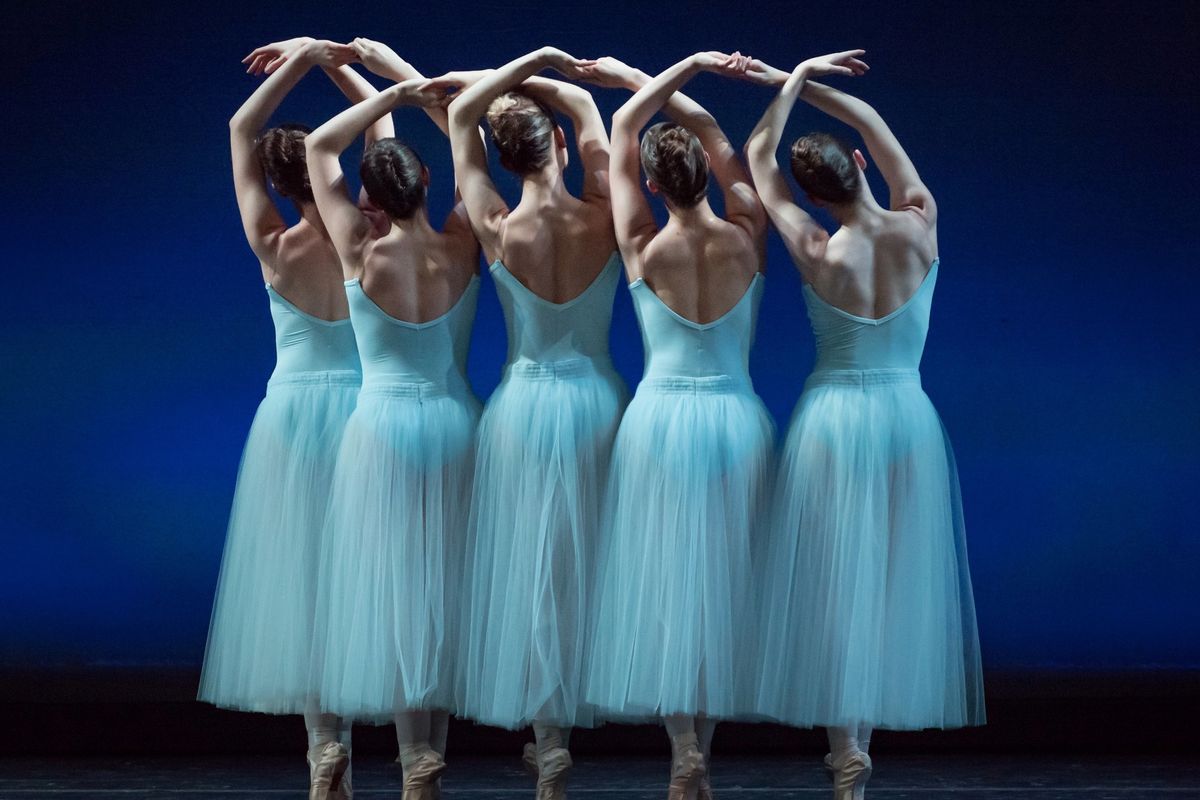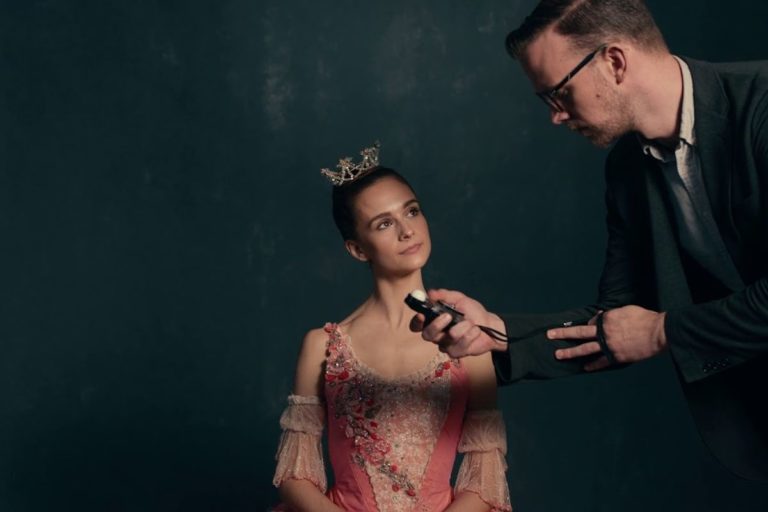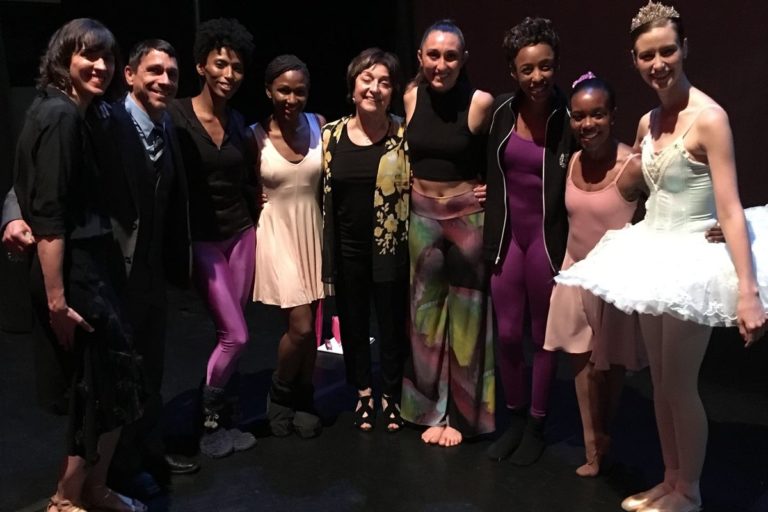
Fleet footwork, nuanced musicality, daring extremes—all are hallmarks of George Balanchine’s legendary choreography on display in the repertory of New York City Ballet and other companies that perform his works. Hyperfocused ballet students can hone their Balanchine technique at the School of American Ballet in NYC, but what about the college dancer who’d like exposure to his neoclassical style?
Through special agreement with The George Balanchine Trust, colleges can request permission to have some of “Mr. B’s” most beloved works set on their students by Trust-approved stagers, who offer unique insight into the challenging repertory. “Dancing Balanchine in the classroom serves as a significant training tool to understand and practice his style and technique,” says Ellen Sorrin, director of the Trust. Balanchine’s works remain popular at the collegiate level, as both choreographic masterpieces and didactic tools for the next generation. They help develop a dancer’s athleticism and speed—without sacrificing clarity—and cultivate the strong Balanchine line.
Three college dance programs recently restaged Balanchine works, and each experience afforded students unique exposure to the legendary choreographer.
Serenade: Syncopated musicality
University of North Carolina School of the Arts • Winston-Salem, North Carolina
Last winter, UNCSA ballet major Jacqueline Hodek performed as the Dark Angel in Serenade (1935), Balanchine’s first American masterpiece. Former NYCB soloist Zippora Karz staged the ballet. “On the first day of rehearsal, Ms. Karz watched some of our morning technique class and selected the principals,” says Hodek. “I was called along with five other girls to audition for the principal roles. She taught us the Russian Girl, the Waltz Girl’s first entrance and the Russian Girl’s second entrance. After she watched us, she knew who each principal would be.”
Growing up, Hodek trained in Vaganova technique but fell in love with the Balanchine style at the Indianapolis School of Ballet. “All of his works are so in-depth and very detail-oriented,” she says. Though she and her classmates had to learn Serenade in just over a week, the process helped Hodek learn “not only to listen to the music but to be the music.” She came to appreciate how Balanchine’s choreography embodies the music. “There might be a change of direction, or an adagio might turn into an allegro,” she says. “Take the third movement of Serenade, for example—it starts slow, and then it picks up and only escalates from there.”
When Hodek graduates, she hopes to dance professionally with a company steeped in Balanchine tradition, such as Miami City Ballet, Ballet West or Dutch National Ballet. “It was a huge honor to perform his works,” she says. “Serenade helped me with my articulation, musicality, punctuation, confidence and artistry.”
Walpurgisnacht Ballet: Precision and footwork
Indiana University • Bloomington, Indiana
Former NYCB principal dancer Kyra Nichols now teaches ballet at Indiana University’s Jacobs School of Music, where she draws from what Balanchine instilled in her. “He really taught me so much about presenting myself,” she says.
In spring 2019, Nichols will set Walpurgisnacht Ballet (1975) on her students. A decade after retiring from NYCB, she says she still makes discoveries in Balanchine’s repertory. With Walpurgisnacht Ballet, she was fascinated to learn the corps de ballet choreography, having danced mostly lead roles during her performance career. “What they were doing behind me was just as incredible,” she says. For Nichols, the essence of Balanchine comes down to the footwork. “You have to be on the balls of your feet so you can change directions: fast then slow; start and stop. It’s all about quickness and precision.” That’s what makes dancers with Balanchine experience highly sought-after at auditions, she says: “The ability to do that style is what many directors want.”
Stars and Stripes: Stamina and history
Florida State University • Tallahassee, Florida
Before graduating last year with her MA in dance, Meagan Helman had the chance to take class from Suzanne Farrell, a celebrated Balanchine muse who is now a part-time faculty member at FSU and a répétiteur of The George Balanchine Trust. “The way she teaches class in the Balanchine style lends itself to greater awareness and familiarity with technique,” says Helman. “It’s this sort of coaching that a lot of students don’t get to experience.”
Farrell set an excerpt from Stars and Stripes during Helman’s time at FSU. Having trained under teachers who came through SAB, Helman knew what to expect—at least to some extent. “I was used to working from broader positions for pirouettes, for example,” she says, “but Balanchine demands a lot of energy. Even a short piece like the Second Campaign from Stars and Stripes is a four-minute whirlwind.”
The opportunity to learn from a living legend like Farrell wasn’t lost on Helman. “It was a unique experience, to learn from a Balanchine teacher who danced with Balanchine himself,” she says. “They’re in limited supply at this point.”






